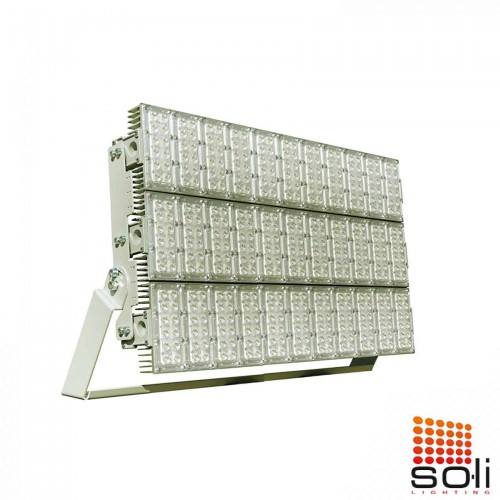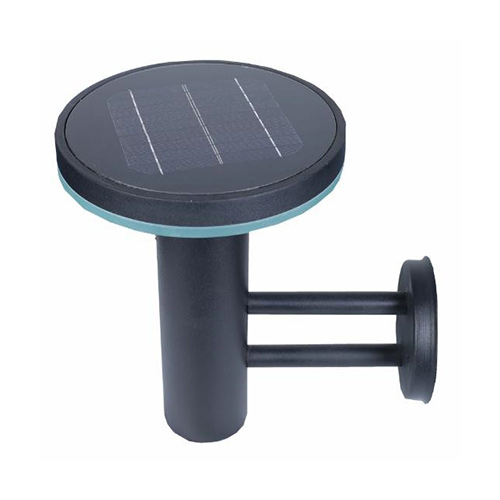There is much more to the planning of lighting for a warehouse than a general array of luminaires. We know that LED lighting affects energy efficiency and operating costs as well as the maintenance of these luminaires. However, there are some challenges when it comes to warehouse lighting.
Poorly arranged lighting installations waste unnecessary energy, misplace light, significantly reducing illuminance levels and making maintenance an unnecessarily expensive and time-consuming procedure. Make sure you know where the shelf should be so that the fixtures do not protrude above the shelves. LED installations should be efficient in any case, but this is no reason not to take advantage of the capabilities of emerging technology. LEDs are easily dimmable. Using localized presence detectors to help reduce energy consumption when no work is done also saves energy.
Warehouses can operate 24/7, meaning that an LED array of approximately 50,000 hours has a lifespan of 7 years. One of the main advantages of using LED lighting is its longevity. If warehouse workers can see well enough about the lighting, they can assume that the lighting does everything it can and should do. But what they won't consider is how much lighting affects their operation and poor lighting can pose a safety issue. This is especially true if the warehouse is lit with old incandescent or fluorescent fixtures. LED lighting systems can make a big impact, especially on warehouses. For example;
Energy efficiency — Perhaps the most important advantage LEDs offer is their lower energy consumption compared to older lighting types. Because LEDs only need a fraction of the power used by conventional light bulbs, they can provide significant savings in running costs in a short period of time. For property owners and managers with larger commercial buildings, it's easy to see the potential for massive bulb replacement. Replacing old bulbs for LEDs has the advantage of contributing to the plant's environmental friendliness by reducing the plant's natural resource consumption and the amount of emissions it generates.
Simple maintenance—Replacing a burned-out light bulb at home is no big project. However, things change when the bulb is 15 feet above your head. This is another reason why using LED light systems makes sense in large industrial areas such as warehouses. Typical lifetimes can be as long as 50,000 hours. And that means you won't be spending a lot of time or money replacing light bulbs.
Less heat — One of the key differences between LEDs and conventional lights is that they generate less heat. This makes it easy to keep a large facility cool during the summer months – another way LEDs can help lower a business's overall costs.
Better lighting — Most LED fixtures produce cool, white light that is more natural, closer to daylight than other bulbs. As a result, it is a great choice for work environments. They are less likely to cause eye strain, resulting in greater employee satisfaction and fewer errors. Most importantly, corridors, stairs, shelves and busy work corners with high traffic can be brightly lit for maximum safety and productivity.
Greater durability — Warehouses are an environment where heavy machinery is often used. Unlike their incandescent and fluorescent counterparts, LEDs are tough enough to withstand heavy machinery and equipment handling in a busy workplace. A machine vibration is less likely to disable an LED fixture because they are much harder to splinter or break.
These are just a few reasons why LED lights should make a great addition to your warehouse. Transforming the lighting of your industrial and commercial workspaces into brighter, longer-lasting and much more energy-efficient LED lights is in the best interests of your business and your employees.
Our ..
₺52,250
Ex Tax:₺52,250
The excite..
₺69,800
Ex Tax:₺69,800
&nbs..
₺42,250
Ex Tax:₺42,250
The excite..
₺24,350
Ex Tax:₺24,350
Our Soli L..
₺18,400
Ex Tax:₺18,400
&nbs..
₺6,450
Ex Tax:₺6,450
Our ..
₺8,700
Ex Tax:₺8,700
The excite..
₺26,600
Ex Tax:₺26,600
LED ..
₺5,250
Ex Tax:₺5,250
Road..
₺6,600
Ex Tax:₺6,600
About LED Flood Lights
- LED Flood Light Buying Guide
- Brain Of Led Flood Lights : LED Flood Light Drivers
- Can A Floodlight Be Used Instead Of Street Lights?
- Are LED Lights Suitable for Hazardous Locations?
- About High Bay and Low Bay Lighting
- 10 Benefits of LED Floodlights for Outdoor Lighting
- Main Factors of Outdoor LED Lighting Design
- Solar Floodlight
- Smart and Human Centered Lighting
- 4 Lighting Design For Post-Covid
- Health Risks That Are Actually Myth About LED Lights
- Things to Avoid When Upgrading Your Lighting Style to LED
- The Future of LED Lighting
- High Power LED Floodlight
- About Amount of Light And Light Quality
- LED Stadium Lighting Information
- Performance of LED Lights in Cold Weather
Usage Areas
- Sports Lighting
- How To Choose Stadium Lighting Company
- Aircraft Hangar Tips
- LED Warehouse Lighting
- Automotive Showroom Lighting
- Safety and Operational Tips for Light Towers
- Advantages and Applications of LED Street Lights
- How LED Street Lights Can Save Citizens Millions of Liras
- Outdoor LED Lighting
- Is LED Industry Evolving?
- LED For Car Parks
- Solar Street Lights
- Use of LEDs in Tunnel Lighting
- LED Lights for Your Garden Inside Your Home
- Solar Street Lights Calculation and Sizing


















